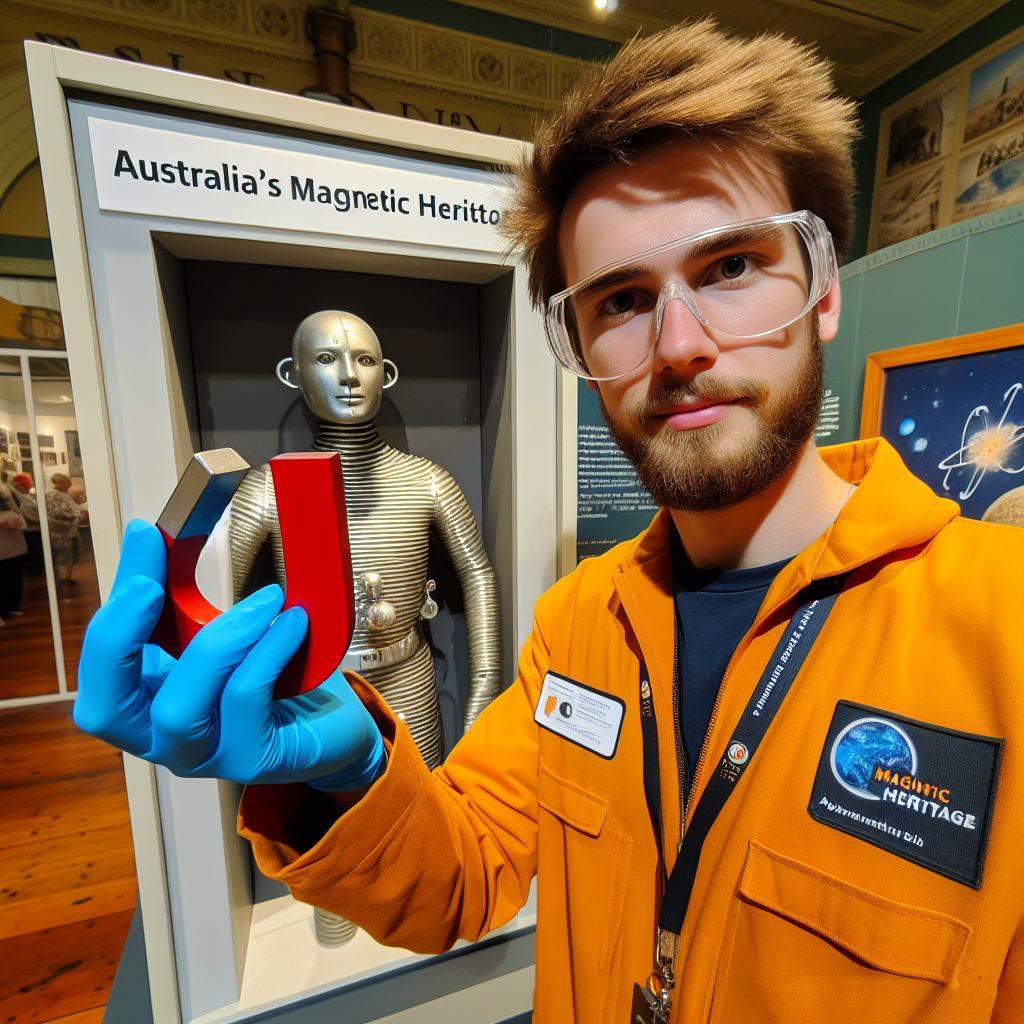Introduction
Astrophysics is the study of celestial objects, such as stars, galaxies, and the universe as a whole. It relies on principles of physics to understand their properties and behaviors.
Astrophysics plays a crucial role in scientific research and discovery, expanding our knowledge of the cosmos.
A Brief Explanation of Astrophysics
Astrophysics involves applying the laws of physics to understand astronomical phenomena. It explores the nature and evolution of celestial objects, from their formation to their eventual fate.
By studying their compositions, motions, and interactions, astrophysicists aim to uncover the mysteries of the universe.
Importance of Astrophysics in Scientific Research and Discovery
Astrophysics provides valuable insights into the workings of the universe, helping scientists answer fundamental questions about its origin and nature.
It enables us to understand the life cycles of stars, the formation of galaxies, and the existence of black holes.
By studying astronomical phenomena, astrophysics contributes to advancements in other scientific fields, including cosmology, particle physics, and planetary science.
Astrophysics also has practical applications, such as in the development of space exploration technologies and satellite communications.
By unraveling the secrets of the universe, it inspires and drives innovations that benefit humanity.
Basically, astrophysics is a fascinating discipline that combines physics principles with the study of celestial objects.
Its importance in scientific research and discovery cannot be overstated, as it deepens our understanding of the cosmos and stimulates advancements in related fields.
By delving into the mysteries of the stars, astrophysics continues to unravel the fascinating story of our universe.
Overview of Astrophysics in Australia
Historical background of astrophysics in Australia
Astrophysics in Australia has a rich historical background, with observatories established in the late 19th century.
These observatories, such as the Melbourne Observatory founded in 1863, laid the foundation for astronomical research in the country.
Australian scientists have made significant contributions to the field, including important discoveries like the expanding universe.
Australia’s unique geographic location in the southern hemisphere grants it an advantage in observing the night sky.
The Anglo-Australian Observatory, established in 1974, further solidified Australia’s position in astrophysics research.
This observatory played a pivotal role in several groundbreaking studies.
Prominent Australian astrophysicists and their contributions
Prominent Australian astrophysicists have left their mark on the field.
Sir Richard Woolley, an English-born Australian, made significant contributions in the early 20th century.
Dame Jocelyn Bell Burnell’s discovery of pulsars revolutionized our understanding of celestial objects.
Emeritus Professor Ken Freeman’s work on dark matter and galaxy formation is internationally renowned.
Professor Lisa Kewley has made groundbreaking contributions to understanding the chemical evolution of galaxies.
Dr. David Malin’s astrophotography has captivated audiences worldwide with its stunning imagery.
Overview of major astrophysics research institutions and facilities in Australia
Australia is home to several major astrophysics research institutions and facilities.
The Commonwealth Scientific and Industrial Research Organisation (CSIRO) operates the Australia Telescope National Facility, enabling cutting-edge radio astronomy research.
The University of Melbourne’s School of Physics has a strong astrophysics group conducting pioneering studies.
The International Centre for Radio Astronomy Research (ICRAR) collaborates with leading institutions worldwide.
The Australian Astronomical Observatory (AAO) operates the Anglo-Australian Telescope, a major facility for astrophysics research.
Additionally, the Australian National University’s Research School of Astronomy and Astrophysics is a premier research institution in the country.
In essence, Australia boasts a rich history in astrophysics, with observatories dating back to the 19th century.
The country’s astrophysicists have made significant contributions to the field, and its research institutions and facilities are at the forefront of cutting-edge research.
With its favorable geographic location and the dedication of its scientists, Australia continues to make significant strides in the field of astrophysics.
Read: The Future of Green Chemistry in Australia
Unique Opportunities for Astrophysics Research in Australia
Access to Southern Hemisphere skies and unique celestial phenomena
Australia’s location in the Southern Hemisphere provides astrophysicists with a distinct advantage.
Due to its southern position, Australia offers a view of the cosmos that is inaccessible from other parts of the world.
Researchers can observe celestial events like the Southern Cross, the Large and Small Magellanic Clouds, and the Magellanic Stream.
These unique phenomena allow for groundbreaking discoveries and a deeper understanding of the universe.
Collaboration opportunities with international partners
Australia’s astrophysics community actively collaborates with international partners from around the globe.
This collaboration fosters a diverse range of expertise, knowledge sharing, and access to advanced telescopes.
International partnerships provide opportunities for joint research projects, data sharing, and cross-cultural exchange.
By working together, astrophysicists can tackle complex scientific questions and push the boundaries of human knowledge.
Australia’s leading role in radio astronomy and radio telescopes
Australia has established itself as a world leader in the field of radio astronomy.
The country is home to cutting-edge telescopes such as the Australian Square Kilometre Array Pathfinder (ASKAP).
ASKAP, with its 36 antennas, enables scientists to study the universe in unprecedented detail.
Australia’s radio astronomy capabilities give researchers a competitive advantage in studying cosmic phenomena like pulsars and cosmic magnetism.
These unique research opportunities attract astrophysicists from around the world to contribute to Australia’s thriving scientific community.
Read: Australian Women in Chemistry: Trailblazers
Major Astrophysics Projects in Australia
Australian Square Kilometre Array Pathfinder (ASKAP)
Overview of the project and its goals
The Australian Square Kilometre Array Pathfinder (ASKAP) is an astrophysics project aimed at studying the universe using radio telescopes spread across the Western Australian desert.
Potential discoveries and advancements expected from ASKAP
With its advanced technology and wide field of view, ASKAP is expected to detect millions of galaxies, helping scientists understand the evolution of the universe and the role of dark energy.
Murchison Widefield Array (MWA)
Exploring the universe at low radio frequencies
Murchison Widefield Array (MWA) is a radio telescope array that enables astronomers to observe the universe at low radio frequencies, providing valuable insights into cosmic phenomena.
Impact of MWA on the study of cosmic phenomena
MWA’s ability to detect faint radio signals has shed light on fast radio bursts, magnetic fields in galaxies, and other transient events, revolutionizing our understanding of the universe.
Your Personalized Career Strategy
Unlock your potential with tailored career consulting. Get clear, actionable steps designed for your success. Start now!
Get StartedAustralian Dark Energy Survey (Aus-DES)
Investigating the mysterious dark energy
The Australian Dark Energy Survey (Aus-DES) is a collaborative effort involving international researchers aiming to probe the nature of dark energy, which constitutes the majority of the universe.
Collaborative efforts and expected outcomes of Aus-DES
Through the collaboration of astrophysicists, cosmologists, and engineers, Aus-DES aims to map the distribution of galaxies, study cosmic expansion, and elucidate the properties of dark energy.
Australia plays a prominent role in astrophysics with its participation in major projects like ASKAP, MWA, and Aus-DES.
These endeavors provide valuable insights into the mysteries of the universe, ranging from the evolution of galaxies to the nature of dark energy.
Through these projects, scientists are pushing the boundaries of knowledge and fostering international collaborations to unravel the secrets of our cosmic existence.
Read: Balancing Lab Work and Life in Australia

Explore Further: Work-Life in AU Research Sectors
Learn More: Grants and Funding for Chemists in Aus
Career Opportunities in Astrophysics in Australia
Overview of career paths in astrophysics
Academic research and teaching positions
For those inclined to contribute to scientific knowledge, pursuing academic research and teaching positions in astrophysics is a promising path.
Universities and research institutions often have positions available for researchers to conduct groundbreaking studies on celestial bodies and phenomena.
These roles involve designing experiments, collecting data, analyzing results, and publishing scientific papers.
Additionally, teaching positions allow astrophysicists to educate the next generation of scientists, inspiring them to explore the wonders of the universe.
Industry roles in astronomy-related technologies
Astrophysics also opens doors to exciting career opportunities in industries that develop and utilize astronomy-related technologies.
Companies involved in designing and manufacturing telescopes, satellites, and space probes require astrophysicists for research and development.
These roles involve applying scientific knowledge to optimize instrumentation, improve data analysis techniques, and build cutting-edge technologies for space exploration.
By working in these industries, astrophysicists contribute to advancements in space science and exploration.
Scholarships and funding opportunities for aspiring astrophysicists in Australia
Astrophysics is an exciting field that offers various career opportunities for individuals passionate about exploring the mysteries of the universe.
Australia, with its renowned research institutions and world-class observatories, provides a fertile ground for aspiring astrophysicists to thrive.
Australia recognizes the importance of fostering talent in the field of astrophysics and offers numerous scholarships and funding opportunities to support aspiring astrophysicists.
These initiatives provide financial assistance and resources to individuals passionate about pursuing a career in astrophysics.
Australian Government Research Training Program (RTP) Scholarships
The Australian Government RTP Scholarships provide financial support to domestic and international students undertaking research-based postgraduate degrees, including astrophysics.
These scholarships cover tuition fees and provide a stipend to assist with living expenses during the course of study.
The program aims to attract high-achieving students to pursue research opportunities in Australia.
Australian Astronomical Observatory (AAO) PhD Scholarships
The AAO offers competitive scholarships for students interested in conducting research in astronomy and astrophysics.
These scholarships support PhD studies and provide funding for research projects conducted at the AAO’s world-class observatories.
Recipients not only receive financial support but also gain access to cutting-edge facilities and mentorship from leading scientists in the field.
Gravitational Wave Astronomy PhD Top-Up Scholarships
Gravitational wave astronomy is a rapidly growing field, and Australia is home to research groups actively contributing to this area.
Scholarships specifically dedicated to gravitational wave astronomy provide additional financial support to PhD students pursuing research in this field.
These scholarships often complement existing PhD scholarships and enhance opportunities for astrophysicists interested in this exciting branch of astrophysics.
Most importantly, a career in astrophysics in Australia offers diverse opportunities to explore the mysteries of the universe.
Whether in academic research and teaching positions or industry roles in astronomy-related technologies, individuals passionate about astrophysics can make significant contributions to scientific knowledge and technological advancements.
Moreover, scholarships and funding initiatives in Australia provide the necessary financial support to nurture and empower aspiring astrophysicists to pursue their dreams and push the boundaries of our understanding of the cosmos.
Read: Navigating Chem Grad Studies in Australia
Conclusion
Australia stands as a celestial hub, contributing significantly to the global landscape of astrophysics.
In summary, the importance of astrophysics in Australia cannot be overstated.
Its impact extends beyond borders, driving scientific discovery and reshaping our understanding of the cosmos.
The section delves into the multifaceted role Australia plays in this cosmic endeavor, highlighting its world-class observatories, groundbreaking research initiatives, and collaborations with international peers.
Encouraging readers to explore astrophysics, the conclusion stresses the vast opportunities and exciting prospects the field holds for aspiring scientists.
By delving into astrophysics, individuals not only contribute to scientific progress but also embark on a journey of endless curiosity and exploration.
The future of astrophysics research in Australia appears promising, with ongoing advancements and a commitment to unraveling the mysteries of the universe.
As Australia continues to pioneer astronomical breakthroughs, the chapter concludes with an optimistic outlook for the future, urging enthusiasts to join the cosmic quest and contribute to the ever-evolving field of astrophysics.
Stand Out with a Resume That Gets Results
Your career is worth more than a generic template. Let us craft a resume and cover letter that showcase your unique strengths and help you secure that dream job.
Get Hired



